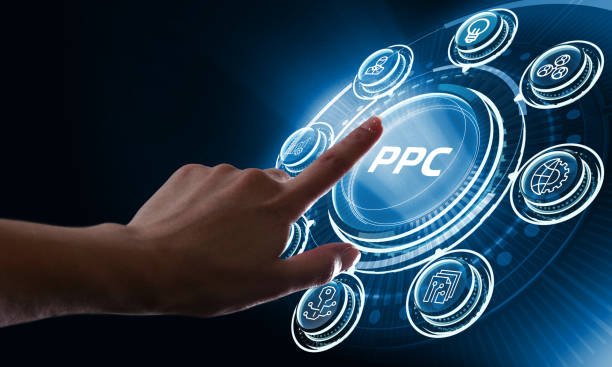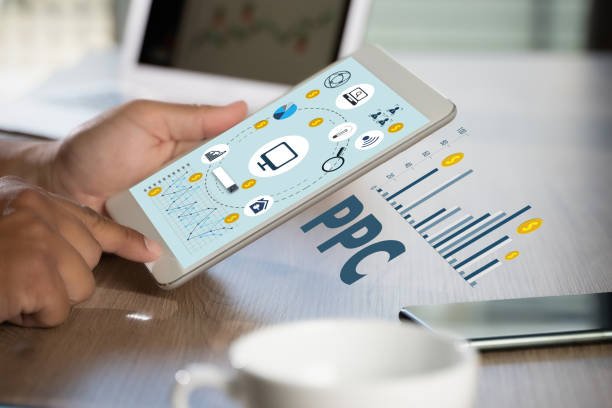Introduction
Pay-Per-Click Advertising is a digital marketing strategy where advertisers place their ads on search engines and websites, paying for each click. This method helps advertisers reach potential customers through specific keywords.
When a user searches for a keyword on a search engine, PPC ads appear with relevant results. This way, advertisers can efficiently reach their target audience and promote their products or services.
How Pay-Per-Click Advertising Works

Pay-Per-Click Advertising is based on a bidding system. Advertisers set their bids for how much they are willing to pay per click. When a user enters a search query, the search engine conducts an auction where advertisers’ bids, ad quality, and relevance are considered.
Ads that are most relevant and have the highest bids appear in top positions. This process is automated, and real-time bidding determines the visibility of ads.
Keywords and Their Importance
Keywords are the core of PPC campaigns. These are the words and phrases users type into search engines. Effective PPC campaigns require keyword research to understand the needs and search behavior of your target audience. When selecting keywords, their relevance, search volume, and competition level need to be evaluated. A good keyword strategy helps you reach a relevant audience and achieve a higher ROI.
Ad Creation and Copywriting
The effectiveness of Pay-Per-Click Advertising largely depends on their creativity and relevance. Ad copy should be engaging and persuasive to compel users to click. The ad title, description, and call-to-action (CTA) should be clearly defined. High-quality ad copy captures the user’s interest and improves conversion rates. Good ad copy highlights your product or service’s unique selling points and gives your ad a competitive edge.
Landing Pages and Their Importance
Landing pages are used to direct traffic from Pay-Per-Click Advertising. These pages are the destinations where users land after clicking on an ad. Effective landing pages are relevant, user-friendly, and conversion-focused. A well-designed landing page enhances user experience and improves conversion rates. When optimizing landing pages, it is essential to focus on content, layout, and call-to-actions.
Optimizing PPC Campaigns

Continuous optimization of PPC campaigns is necessary to achieve your advertising goals. Optimization includes monitoring and adjusting keyword performance, ad copy, bidding strategies, and landing page elements.
Regular analysis and testing help improve campaign efficiency and reduce wasteful spending. Good optimization practices help maximize ROI and control advertising costs.
PPC Metrics and Analytics
Various metrics and analytics tools are used to measure the effectiveness of Pay-Per-Click Advertising campaigns. Key metrics include click-through rate (CTR), cost-per-click (CPC), conversion rate, and return on ad spend (ROAS).
These metrics provide insights into how successful your campaigns are and where improvements are needed. Analytics tools allow you to track campaign performance and make data-driven decisions that enhance your advertising strategy.
Common PPC Mistakes and How to Avoid Them
There are common mistakes in PPC advertising that negatively impact campaign effectiveness. These include improper keyword selection, poor ad copy, ineffective landing pages, and lack of regular optimization.
To avoid these mistakes, thorough keyword research, creative ad copy, optimized landing pages, and continuous monitoring are necessary. Regular analysis and testing help identify and correct these mistakes, strengthening your PPC strategy.
PPC Platforms and Tools
Various platforms and tools are available forPay-Per-Click Advertising that help advertisers manage and optimize campaigns. Google Ads and Bing Ads are major PPC networks offering search engine advertising.
Social media platforms like Facebook and Instagram also provide PPC advertising to help reach targeted audiences. Additionally, PPC management tools such as SEMrush and Moz are useful for analyzing and optimizing campaign performance.
Future Trends in PPC Advertising

The Pay-Per-Click Advertising industry is constantly evolving, with new trends emerging. The use of artificial intelligence (AI) and machine learning in PPC optimization is increasing, enhancing automated bidding and ad personalization.
Voice search and visual search technologies are also impacting PPC strategies. Monitoring and adapting to future trends is essential to keep your PPC campaigns modern and effective. Constant innovation and technology adoption help keep your advertising efforts ahead of the curve.
Last Update: August 31, 2024





